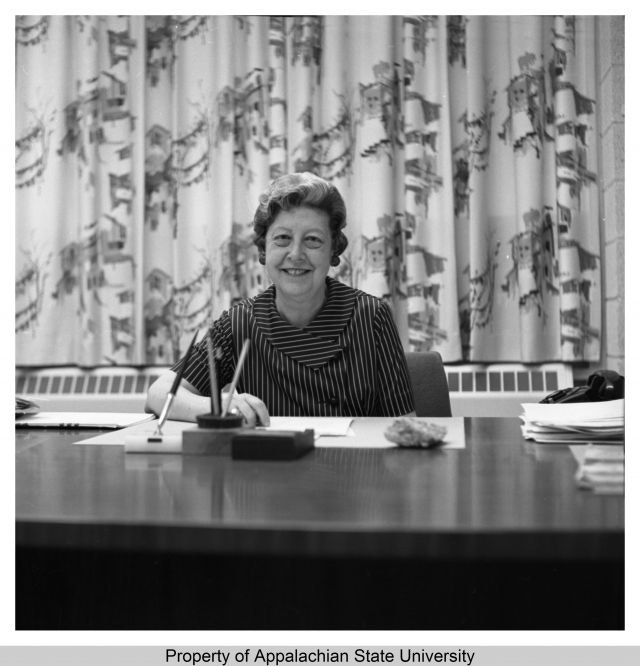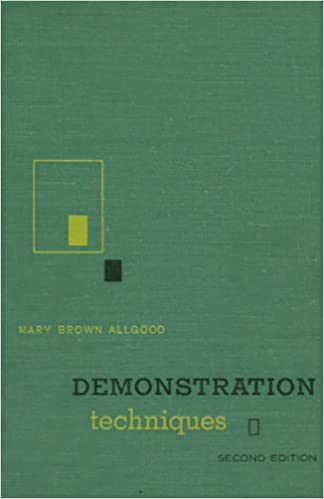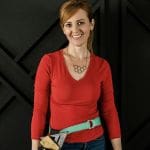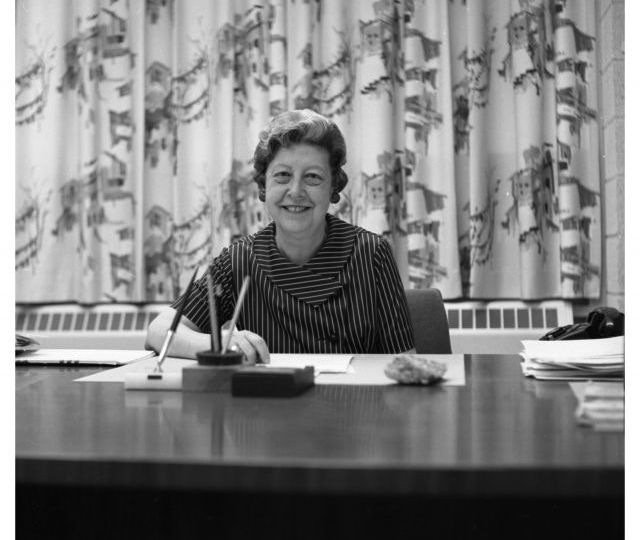
A popular TV technique to show off how to make pretty much anything, the first cooking show swap-out wasn’t created by Martha Stewart or Julia Child.
Thinking about creating the first cooking show or being the first cooking show host when TV was new, it sounds tough.
Figuring out how to show off the steps, make the food read well in black-and-white, and stick to a time format was a new challenge. Homemakers were used to longer format in-person presentations and radio shows where no one would know if the food wasn’t ready at the end.
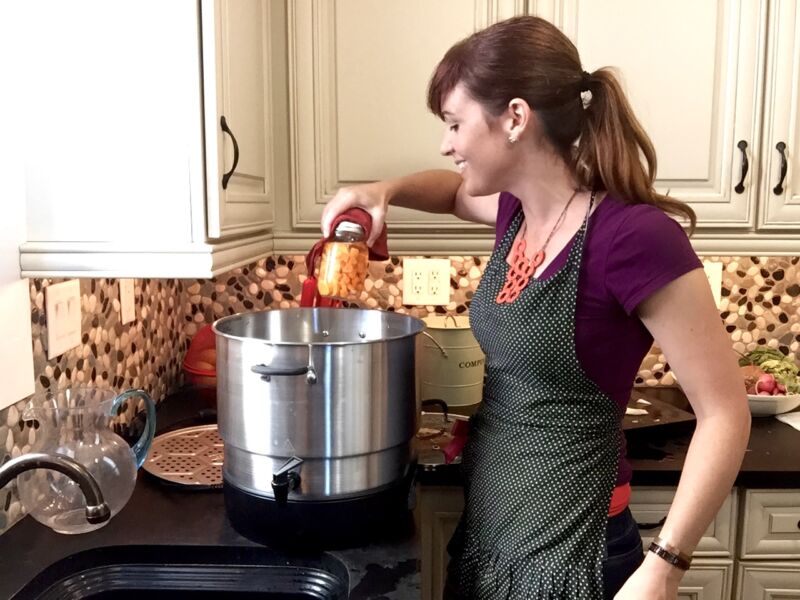
So learning about how the cooking show was born, and the women who made it happen, in a book about the history of home economics was a delight.
We’ve used the TV swap-out for recipes, but mostly Mark and I have used it to show DIY how-to on morning television shows. Sometimes producers would give just 4 minutes to show a project, which is a Herculean struggle. Other times, generous TV morning news show producers would ask us to build something throughout the entire show, with check-ins throughout. Either way, the swap-out is handy.
Having some of the pieces pre-cut, and a finished example ready to show, can be a lifesaver when the power surprisingly cuts off or the crew asks you to ‘quietly use power tools’ during their other segments.
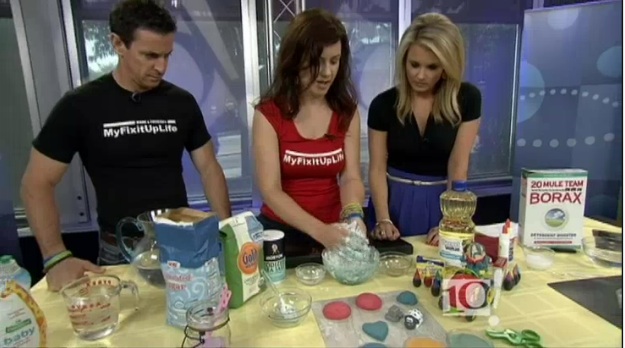
What’s the origin of the cooking show?
For years, women had been showing others their cooking skills, many earning degrees in Home Economics. They were sharing what they learned to help develop recipes for food makers and teach others how to be more efficient at home. It was sort of a catch-all career choice, as women who wanted to become scientists, engineers, or have other seemingly ‘masculine’ careers weren’t allowed to enter those fields.
Home economics enveloped so many aspects of living. It was an undercover way to train and work as a technical expert in a desired field.
When did cooking shows become popular?
In the early- to mid-part of the 20th century, these experts were revising recipes and methods of cooking. Spurred by the hundreds of new food additives and kitchen helpers like plastic wrap, nonstick coatings, and frozen food. They worked for the gas company, JC Penney, and food makers. Among the more famous one was the fictional-but-real Betty Newton for Columbia Gas. The company served 2 million customers and also sold appliances. Women portrayed the character of Betty, wearing regulation outfits in full skirts and round collars and gloves, but without aprons.
The Bettys were helpful and handy. ‘Betty’ had a daily 30-minute radio show, created movies, did demos at model kitchens in branch offices, and made house calls. They could even take apart and repair equipment. Plus, the Bettys designed the menu and recipes for Bob Evans when it created its restaurants. Some of the recipes that came out of this time period were weird. Just think about salad pie. Made with lemon Jell-O, frozen veggies, cottage cheese, and tomato paste served in a pie shell. However odd, they were trying to innovate and some of their creations were hits.
The cooking radio shows by non-Bettys were also very popular. In the 1940s, Willa Monroe hosted Tan Town Homemaker’s Show in Memphis with 40 percent of the city’s listeners tuning in. And 14 radio homemaker shows were broadcast from just Shenandoah, Iowa, with a population of about 7,000. It was a booming era for the first cooking show hosts on radio and in-person.
Who was the first family (the OG) of lifestyle influencers?
And then there was Kitchen-Klatter. A popular brand from Leanna Driftmier and her family, she was the original multimedia family empire of influencers (like the Kardashian-Jenner clan of today).
As the original well-rounded lifestyle brand, they created magazine, cookbooks, seed packets, cleaning products, flavorings, and sewing guides. Her sister helped found 4-H, and her brother worked in radio and as a seed and nursery owner. Plus, the radio show was the longest-running homemaker program in radio history.


Leanna Driftmier the OG of including family in the lifestyle influencer business 
Who developed the techniques for the first cooking hosts?
But it was Mary Brown Allgood who perfected cooking on camera. The Penn State professor created a helpful guide book in 1953 called Television Demonstration Techniques for Home Economists, detailing everything a budding TV cooking presenter would need to know to be successful in the new TV media.
Mary said it’s essential for a cooking show host to have an iron constitution and be friendly. In order to hook the audience’s attention, she believed in starting every episode with an action shot. This is now such a common technique used in so many how-to and DIY shows on TV and online.
And she thought about the camera in every action and sound. For example, it’s important to stand aside to show inside the fridge when opening it to get something. Tilt the bowl so the camera can see where you are mixing the ingredients. Pad the underside of bowls so they didn’t make extra noise.
So, tell me about how she created first cooking show swap-out.
But most importantly for a TV cooking show to work and seem easy, Mary had the insight to plan ahead. She would have the recipe prepped in different stages, in case a step took too long for the show format. That’s what is now known as the swap-out.
Used in cooking shows, and other DIY programs, the cooking show swap-out technique speeds up real-time so the viewer can see each step and the final creation.
While I love homemaker tasks like sewing, cooking, knitting, and decorating, the history of Home Economics isn’t something I’d ever studied, even in Women’s History courses in college. We’ve had the opportunity to work on Food Network shows, and still these names were new to me. And, I’m thankful to the experts who had the insight and ingenuity to figure out the techniques that we now use like second-nature.
If you are also curious about the history of the cooking show and how home economics changed career opportunities for women, check out ‘The Secret History of Home Economics’ by Danielle Dreilinger. It’s a good read. Plus, I learned why my 7th grader takes Family & Consumer Science instead of Home Economics.
We’d love to know what you think about the creation of the first cooking show swap-out. Do you know others who were among the first cooking show hosts that haven’t become well-known?
If you have any questions or details to add to the story, please share below.



